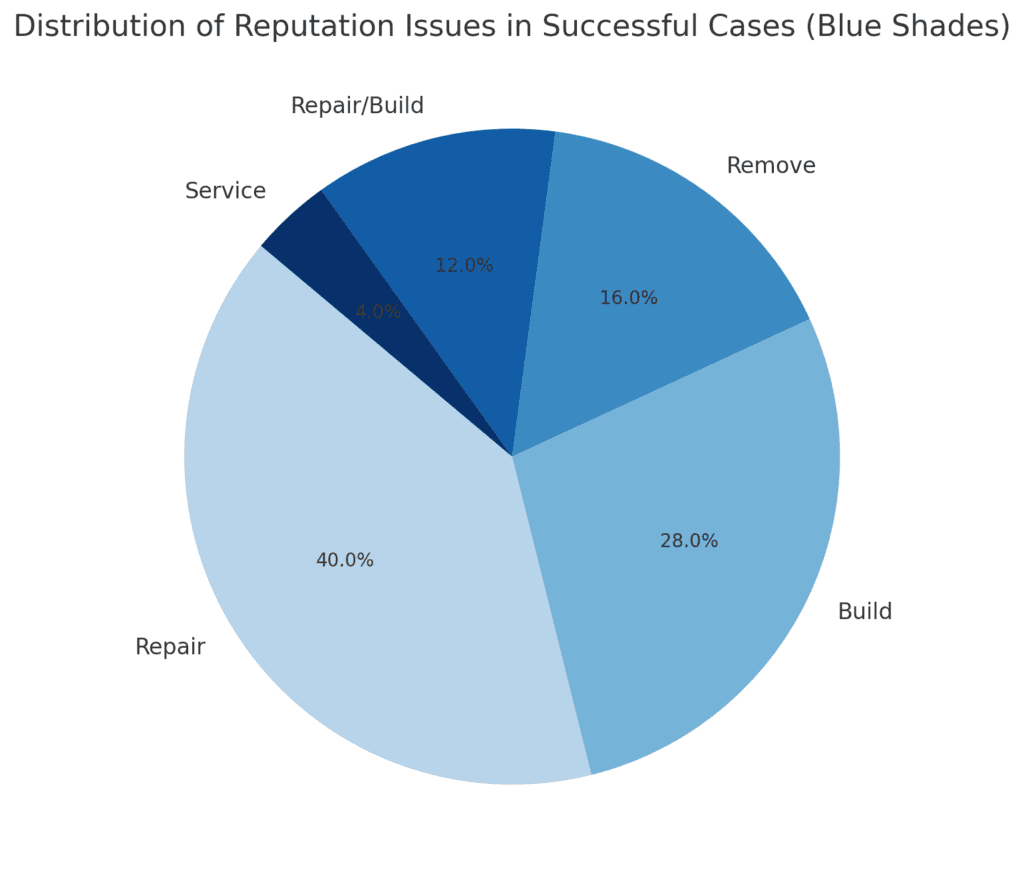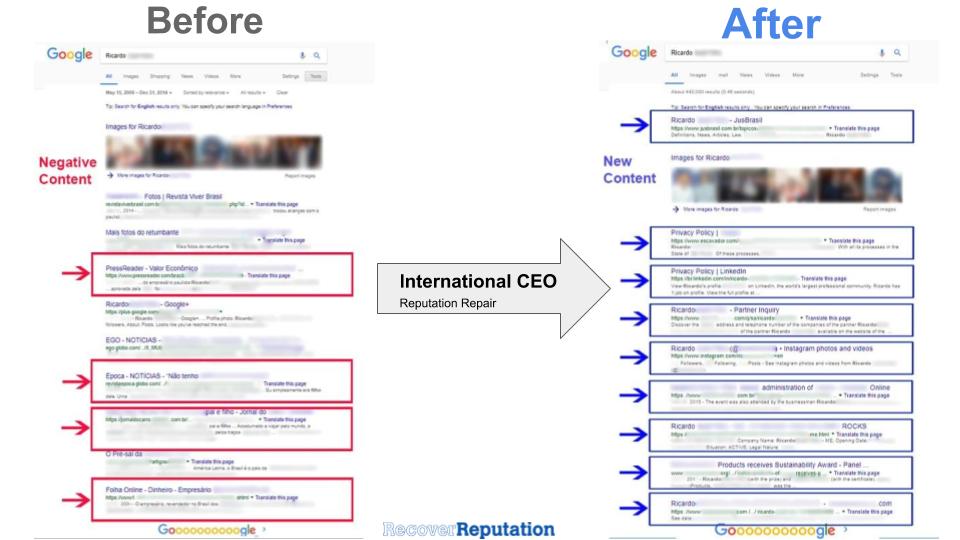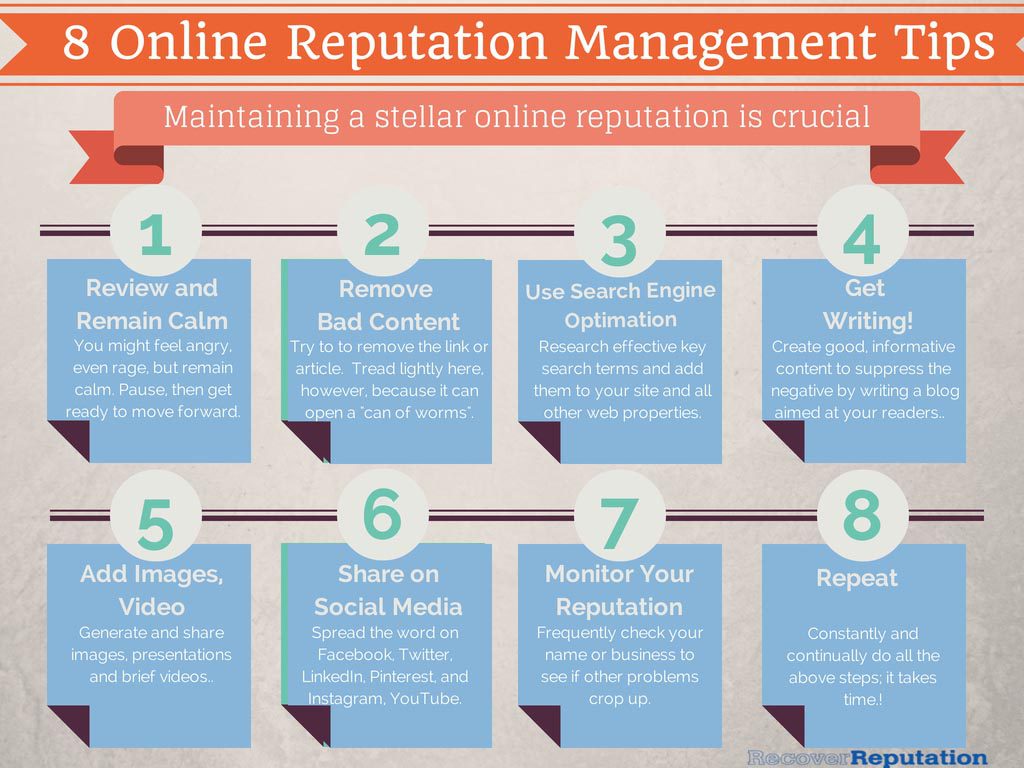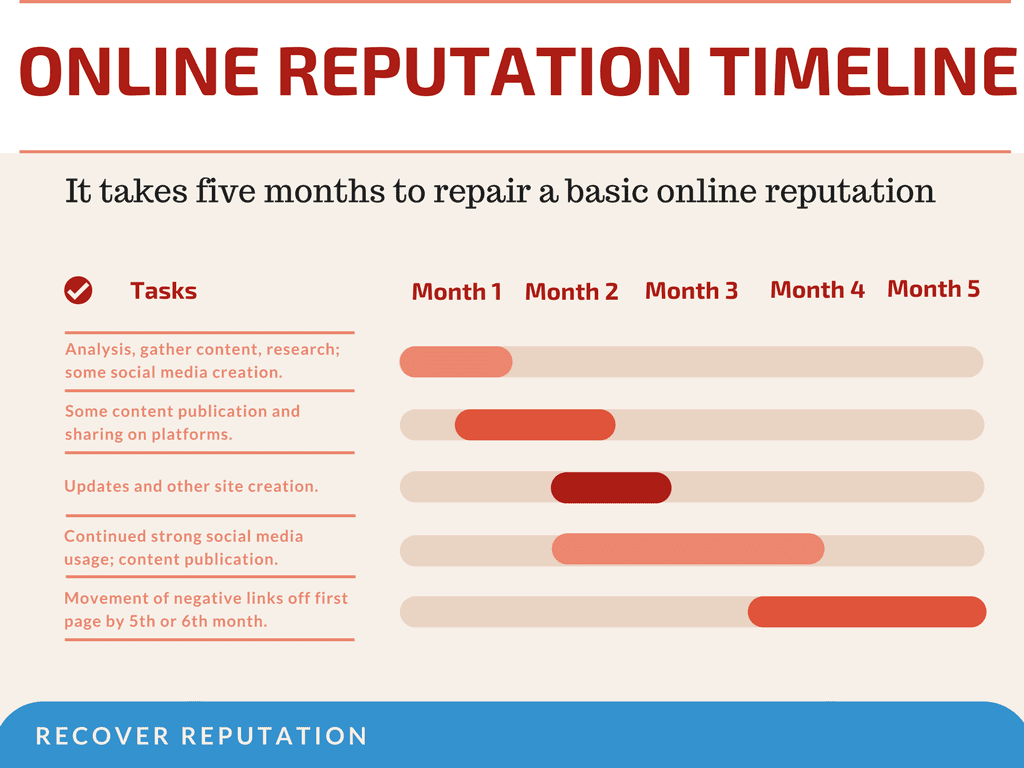What is Online Reputation Management
Quality-Centric
Recover Reputation provides targeted and effective reputation repair services to help maintain a positive online presence.
Approach
We devise customized strategies, using quality articles, engaging social media, and impactful visuals to mitigate negative online issues.
Keys
- Targeted
- Customized
- 90% Effective
Table of Contents
What Is Online Reputation Management?
ORM Definition
First, what is online reputation management, (and why is it important)?
Everything appearing in Google search results–blogs, articles, videos, reviews, etc.–make up your web reputation. Since this is what many see first, it is crucial to get this right. Reputation management also includes social media posts and slightly tangential but related areas such as search engine optimization (SEO), media, and even printed products–much more than just reviews. At its essence is trust.
Reflection of You
A well-crafted online presence needs to convey a professional, friendly, experienced tone that helps confirm that you are the right person to work with. Finally, compelling online content substantiates confidence.
Basic Tools
Articles, white papers, presentations, videos, social media platforms, and your website need to drive this point home. However, the work here should always be focused on what the potential client wants, showing you as the definitive and dependable source that solves their problems.
Connect to Customers
When customers see a positive web presence, they feel more comfortable choosing you to work with over a competitor. Don’t be afraid to give away information because this signals to clients that you are comfortable being helpful to address their issues.
Why Online Reputation Management Is Important
Way to Gain Clients
A positive online reputation attracts clients naturally. Gaining new business is rarely easy, especially when starting, but having a robust online presence helps substantially.
Build Trust
Google search results filled with positive links draw in prospective buyers. However, people seek answers as well as credibility when searching for you or your business, wondering, “can I trust them?” If they see articles, blog posts, interviews, social media platforms, videos filling the first page of searches, they will likely hire you over a competitor. As a result, online reputation management needs to be a priority.
Minimal Information Is a Problem
On the other hand, if minimal information appears online, potential clients might wonder if the business is active, uncaring, or negligent–both about their web presence and their business. If negative links or poor reviews appear, any potential clients swiftly move on to someone else. In both cases, the best personal recommendations from a friend or colleague become immaterial as its essence is trust.
Typical Client Questions
Potential clients usually have a series of questions about new business partnerships. Some are:
- Are they trustworthy?
- Have they been in business long?
- Where can I see examples of success?
- Can they solve my problem?
- Do they understand my issue?
- Will they give me good advice?
- Are they overcharging me?
- Is it a good value?
- When can I see the results?
- Who else have they worked with?
- Is there a guarantee?
An online reputation needs to address and answer these questions.

Poor or Negative Reputation
Invisible Online
An online reputation with limited or no search results is highly problematic. Essentially, your business is invisible. Almost as bad as negative reviews, When few links appear in Google, potential customers ask themselves, “Are they still in business?”, “Are they unprofessional?”, “Do they even care?” or “Is this the kind of firm I want to work with?” A poorly defined online reputation is seen as untrustworthy, forcing clients just to move on.
Negative Links
Most severe is if a damaging issue appears in a few pages of Google searches. Competitors, “trolls,” ex-partners, disgruntled employees, and of course, unhappy buyers, can write negative posts, and even if it’s not genuinely condemning, new and existing clients will quickly move on to someone else without even investigating the problem.
So, to gain new clients, establish an accomplished online reputation.
Online Reputation Strategy
Start with a Plan
Before building a reputation, develop a carefully considered strategy. It should be built around who you want to work with, where to reach them, and how to connect with them. Requiring continual tweaking, the best approach always is focused on original content, sharing meaningful information, and being helpful.
Conduct Research
To formulate this, start by asking essential but crucial questions–even your business is well established:
- Who are you trying to connect with?
- How will you build trust?
- What kind of content will you create?
- How and when will you share it?
No Single Solution
Each reputation strategy needs to be customized for the targeted ideal client. As a result, no two solutions will be alike. Other significant considerations include industry, geographic location, company size, specific challenges, and business goals. Keys are creativity, constant updates, and constant adjustments.
For example, repairing a reputation for a financial advisor differs substantially from that of building an initial web presence for a recently graduated student or young professional. Equally different are the needs of an entrepreneur who received initial investment funding compared to an established CEO professional working at a large firm. A biomass firm in Brazil is still different from an international divorce lawyer in Paris, etc.
Not getting this right could mean failure.

Great Content Draws in Clients
Focus on Content
Craft an exceptional reputation by assembling superior content. This might appear straightforward but can be challenging to implement in a way that engages meaningfully with customers appropriately. Keep the focus on:
- What content to make.
- When to share it.
- Who to share it with.
Provide Answers
Knowing what matters to prospects and delivering solutions is fundamental. Meaningful written and visual posts are powerful ways to stay top-of-mind.
Share Information
If you are just starting an initial conversation, send relevant posts or white papers to forge trust. If you are negotiating with a new client, point them to ROI calculations and case studies. If you’ve worked with someone in the past but think they could benefit from an additional service you offer, reach out with new information. Even if a buyer says “no” or decides to work with someone else, continue to circulate occasional articles since you never know when their situation will change.
Pick the Right Platforms
When to share depends on the platform and other factors. Some social media sites have optimal posting times, which could be during business hours, weekends, evenings, or other times. For example, 9-to-5 generally is the best time for Twitter and blogs; early morning and end of the day for LinkedIn; slightly later in the day for Facebook; night and weekends for Pinterest. When to share also significantly depends on the client’s buying stage (see more below).
Who to share it with prospective clients, people who’ve shown interest in the past, previous clients, and people you’d like to work with. Don’t forget ancillary professionals who are natural referrers.
Build Trust Online
Make Quality
Create unique content. As an experienced professional, write, post, and share real insights that resolve prospective client’s problems. Quality work illustrates credibility, integrity, and proficiency. People seeing this in Google searches will be naturally drawn to working with you and are more likely to become customers.
Where to Find Content
Collect or create information from a variety of places. The primary source should be authored by yourself, but carefully curate text, images, and video from topics based on what matters most to clients. This should be thoroughly researched before starting to make sure it properly resonates with customers. Other content sources are related social media posts, Google Alerts to capture real-time industry news, business experts, magazines, etc.
Make Different Content
at Different Times
Pick the Right Time
Offer the appropriate content at the right time. Be mindful of the time of day, as mentioned above, or where a client is in the business cycle. For example, during the initial client consultation, listen attentively, then point them to helpful blogs or white papers. If they have additional questions, pass on detailed case studies to further trust that you are the right person to hire.
Be Transparent
As you continue working together, be transparent and forthright when addressing any client concerns. Not paying attention to their issues can lead to online reputation damage for you, especially if they voice complaints on social media.
Key in Touch
When the project is complete, continue to stay in touch since this could yield recommendations. Send occasional emails asking how they are doing, share articles they would like, and see if you can help them in other ways. Update your case studies based on your success, and put these online to show your reputation as an adept specialist.
Get Active Online
Constant Content Generation
Generate a constant flow of rich content in a variety of forms.
Do this frequently:
- Consistently write excellent new blog articles.
- Post valuable information frequently to a range of critical social media platforms.
- Engage with prospective clients across all relevant channels by sharing, commenting, retweeting, etc.
- Develop guest blogs; create posts for others.
- Participate in online groups.
- Join in-person networking organizations.
- Be open and helpful.
Show up online constantly, clearly, and consistently, always delivering value and connecting in meaningful ways.

Don’t Sell; Share and Help
Help Others
Listen intently to potential prospects. Concentrate on what they have to say rather than present your plan and perceived solution—pausing to hear what they have to say signals you’re capable of really comprehending their issues and are ready to help.
Share Information
For example, share a pertinent blog article you’ve written that points them to a solution you’ve found for a previous client. Gain their trust, and they’ll ask you about your services on their own without the need to push for a sale.
Tweak and Update Constantly
Constantly Review
Be nimble. Pivot to alternative solutions since reputation management is more alchemy rather than a mathematical formula. Google never divulges the “secret sauce” used for their page ranking system, so it’s essential to monitor, review, and tweak your strategy constantly.
Google Is Changing
Also, Google itself is a “wild card” in the reputation process since they are constantly tinkering with their algorithms, making major–and unannounced–updates about every six months. In other words, the strategy that worked three months ago might not work three months from now; what worked a year ago will probably not work a year from now.
Since reputation management is always a moving target, the only constant is to institute unique content for your prospects.

There is No Overnight Success
It Takes a Time
Building an online reputation takes time. When consulting with clients about building or repairing their reputation, I sometimes get the response, “I tried that already, and it didn’t work.” But digging deeper, I often find that they only tried one approach and quickly gave up because they didn’t see immediate results.
Six Month Minimum
To fill the first page of Google search results with positive articles is a long-term process. Although some steps can be made nearly immediately (i.e., within weeks), a properly built robust reputation can take six months or a year. Remember too that ongoing maintenance can and should continue throughout the life of the business.
So don’t give up, and continue pushing forward, developing your web presence incrementally.
All screenshots are real "before-and-after" client search results.
All photographs are made by the founder.
Ready to Regain Control of Your
Online Reputation?
Get in touch with us today for a free consultation. Let's work together to restore your online reputation and get your life back on track.